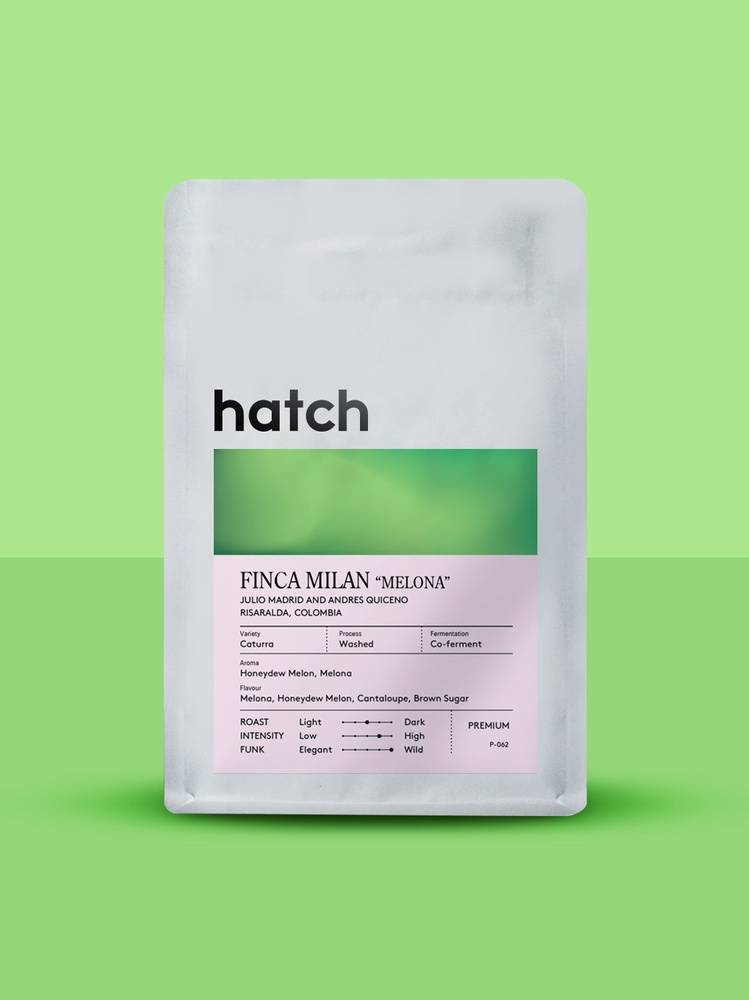HATCH COFFEE ROASTERS
HATCH - Finca Milan Melona | Colombia - Cultured Embryonic Nitro Washed - Caturra
HATCH - Finca Milan Melona | Colombia - Cultured Embryonic Nitro Washed - Caturra
 Origin: Colombia
Origin: Colombia
 Tasting Notes: Melona, Honeydew Melon, Cantaloupe, Brown Sugar
Tasting Notes: Melona, Honeydew Melon, Cantaloupe, Brown Sugar
 Process: Cultured Embryonic Nitro Washed
Process: Cultured Embryonic Nitro Washed
 Varieties: Caturra
Varieties: Caturra
 Producer: Julio Madrid & Andres Quinceno
Producer: Julio Madrid & Andres Quinceno
 Region: Pereira
Region: Pereira
 Elevation: 1600 masl
Elevation: 1600 masl
 Harvest: 2025
Harvest: 2025
 Recommended Brew: Filter
Recommended Brew: Filter
 Roast Date:
Roast Date:
Couldn't load pickup availability
Hatch Coffee Roasters is located in Markham, Ontario, Canada
From HATCH
We are excited for the return of the incredible work being done by Julio Cesar Madrid and processing specialist Andres Julio Quinceno, who are pushing the boundaries of coffee flavor with their work at Finca Milan and Finca La Riveria.
Finca Milan, a 250-hectare estate owned by Julio Cesar Madrid's family for over 40 years, is located in the central foothills of the Andes Mountains in the Risaralda Department. Its young, volcanic soil and wide thermal range (15ºC to 30ºC) allow the Caturra, Castillo, Pink Bourbon, and Catiope varieties to develop complex and unique flavors. Together with Finca Riviera and Finca Buenos Aires, their family estates have won multiple awards.
Andres Quinceno created a unique anaerobic processing method that utilizes "embryonic stress" to generate unique flavors. This involves subjecting ripe coffee cherries to a "nitro washed process," where the temperature rises and falls by 12 degrees to optimize them for fermentation.
After pulping, the beans are placed in a sealed bioreactor, inoculated with starter cultures (yeast and bacteria) and watermelon fruit mossto, and injected with nitrogen. Temperature, acidity, and Brix degrees are closely monitored against historical data to time the end of the fermentation stage and initiate oxidation.
The coffee beans are then dried in solar dryers to 40% moisture, moved to mechanical dryers until they reach 10–12% moisture, and rested in a warehouse for approximately 45 days before being hulled and prepared for export.
Share



